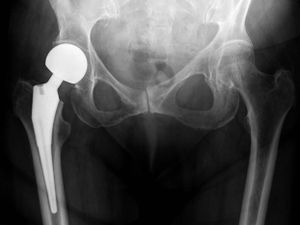
Hemiarthroplasty, also known as partial hip replacement, is a surgical procedure that involves replacing the "ball" part of the hip joint (the femoral head) with an artificial implant while preserving the natural socket (acetabulum) of the hip joint. This procedure is typically used to treat conditions where the femoral head is damaged or deteriorated, such as fractures of the femoral neck or avascular necrosis. Here's an overview of how hemiarthroplasty is performed:
Hemiarthroplasty is often used for elderly patients with displaced hip fractures or for individuals with avascular necrosis of the femoral head. By replacing the damaged femoral head, pain is often relieved, and hip joint function can be partially restored, allowing for improved mobility and quality of life.
It's important to note that hemiarthroplasty only addresses issues with the femoral head and not the acetabulum (the socket). In cases where both the femoral head and the acetabulum are affected by arthritis or other conditions, a total hip replacement (total hip arthroplasty) may be considered. In total hip replacement, both the femoral head and the acetabulum are replaced with prosthetic components.
As with any surgical procedure, hemiarthroplasty carries risks and potential complications, such as infection, implant loosening, or nerve injury. Patients should have a thorough discussion with their orthopedic surgeon to understand the benefits, risks, and expected outcomes of the procedure before making a decision.
